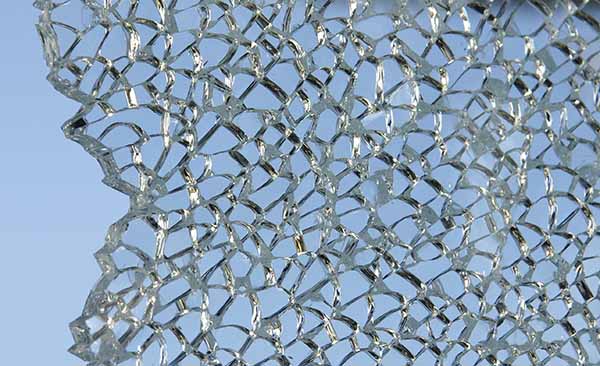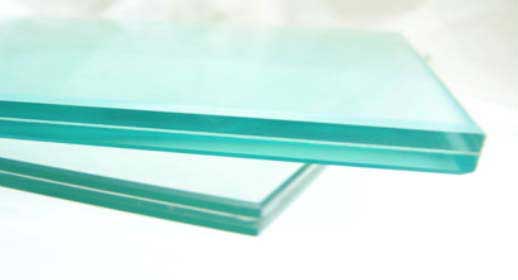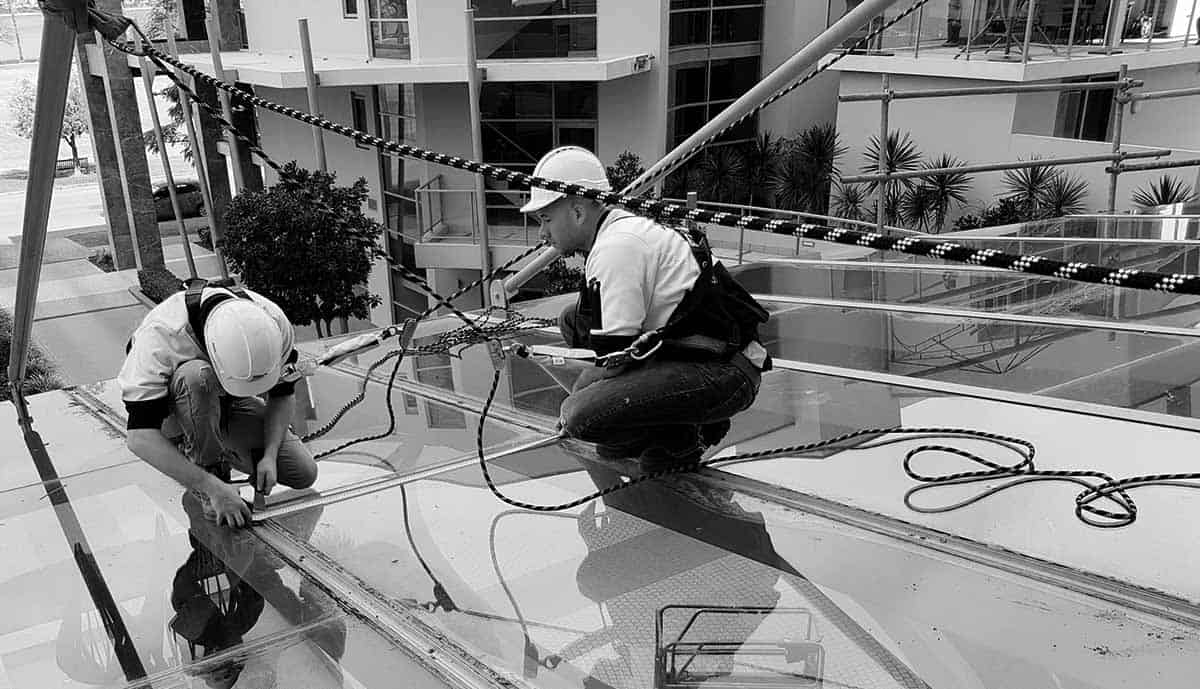Are you searching for a safety glass solution? Then you have two options: toughened or laminated glass.
These two glass types may seem similar at first, but they both have unique and distinctive qualities that make them suitable for various applications.
What is Toughened Glass?

First, let’s discuss what toughened glass is. Otherwise known as tempered glass, toughened glass is a super-strong glass up to five times sturdier than ordinary glass. Tempered glass provides a heat resistance four to five times stronger than standard, annealed glass and can withstand high-temperature adjustments of up to 250°C.
To produce toughened glass, a standard pane of glass is heated to a high temperature. Then, it’s cooled quickly, which helps to create a robust outer layer. This outer layer can better withstand impacts and temperature variations.
Toughened glass is used for many applications where heat-resistance and robustness is required. For example, pool fences, balustrading, shower screens, greenhouse glass, and worktops can feature toughened glass.
This type of glass must be struck with much stronger forces than standard glass for it to break. While laminated glass remains in place when it’s traumatized, toughened glass shatters into a miriad of small pieces. You may have noticed this when a telephone box or bus stop has been vandalised.
The good news is that the remarkable durability of toughened glass makes it more challenging to shatter. And if it does, it breaks into tiny, safe, blunt pieces.
This way of breaking minimizes the risk of injury compared to annealed glass which shatters into bigger, jagged pieces that can cause injury to anyone close by.
What is Laminated Glass?

Now, let’s discuss laminated glass. Laminated glass stays in place when broken. It consists of two or more glass pieces with a plastic layer in between that’s typically made from EVA (ethylene-vinyl acetate) or PVB (polyvinyl butyral). Laminated glass is produced with the use of pressure rollers, which help the mechanical and chemical bonds form.
Laminated glass is ideal for locations where high security or safety is essential, such as certain balcony balustrades, shop fronts, glass canopies, external and internal doors, and residential buildings. This means that the hazardous shards don’t scatter or fall on the surrounding areas and also there is no hole left to tempt thieves.
This type of glass is also known for being used on the windscreens on most of the world’s cars.
This global use on cars can be attributed to the way laminated glass shatters. As it maintains its place long enough for a replacement to be found, it’s ideal for use on cars. This is all thanks to the plastic interlayer that sits between the two glass sheets during the manufacturing process.
The plastic interlay bonds the two panes together like glue, so even when the glass shatters, the pieces are kept together on the thin film.
What are the Differences?
As mentioned, toughened glass and laminated glass are produced differently. However, the most significant differences between the two glasses lie in their uses.
Toughened glass can be fit without a frame, but most laminated glass needs a structure to defend it from delamination. When laminated glass meets water, it can potentially delaminate. That’s why a frame is preferred to keep the edges protected.
However, toughened glass works for framed and frameless uses, including pool fencing and glass balustrade.
Laminated glass is shatter-proof and is more robust than toughened glass thanks to the additional layers. However, it still typically uses annealed glass, but can utilise toughened glass in specific instances.
If you want to make sure that the glass stays in its original place, like a canopy or a balcony barrier, laminated glass is often the more suitable and safer choice. While toughened glass may be strong, once it shatters, it leaves a hole, which can be dangerous in some circumstances.
If the glass is freestanding and isn’t supported by a frame, it will typically be toughened glass.
Both toughened and laminated glass have their standards. Each panel must have a distinct ‘standards’ stamp on it, displaying the company and other information and data, including numbered codes.
Laminated Glass vs Toughened Glass
If you’re looking for safety glass but unsure which type is appropriate for your project, please call us at WA Special Projects and we’ll be happy to advise.
We take great pride in our products and services, no matter how big or small the project. Every single one of our designers and installation technicians has years of experience under their belt in both simple and challenging applications and projects. We’ve completed hundreds of both residential and commercial projects across Western Australia. Plus, our reputation for hard work and reliability means we get to work with some of Australia’s most renowned brands.
Please get in contact with us today and receive a quote on your project


